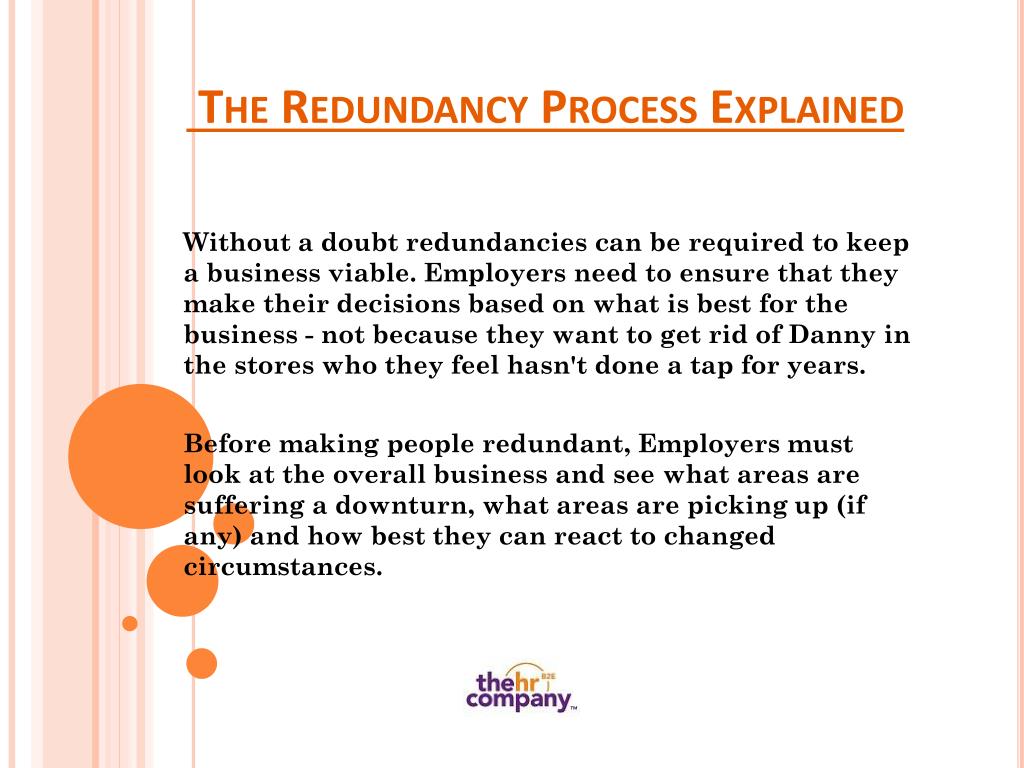Exploring the Interplay Between Business Redundancy and Business Adaptability for Future Development
In the vibrant landscape these days's organization globe, the elaborate connection between business redundancy and business adaptability emerges as an important element for sustained development and success. Business usually face the obstacle of striking a delicate balance between maintaining a level of redundancy to alleviate threats and promoting flexibility to respond swiftly to the ever-evolving market demands. This fragile interaction holds the key to not only making it through in turbulent times but also prospering despite unpredictability. As we explore the complex measurements of this interplay, interesting insights right into how organizations navigate these complexities to lead the way for future development await.
Value of Company Redundancy
Business redundancy is a critical component that improves organizational durability and alleviates functional risks. By including redundancy measures within the business framework, firms can better stand up to unpredicted disturbances and variations in business atmosphere. Redundancy works as a critical buffer, permitting companies to adjust and react properly to unanticipated difficulties without jeopardizing important operations.
One key facet of the importance of business redundancy is its role in guaranteeing continuity during times of situation. When confronted with sudden changes or emergency situations, redundant systems, sources, or workers can step in to preserve critical features and prevent prevalent disruptions. This connection not only safeguards the firm's track record and consumer trust yet likewise minimizes financial losses and functional downtime.

Techniques for Business Versatility

An additional vital strategy is spending in technology and infrastructure that can support versatility and scalability. Executing electronic tools, automation, and data analytics can enhance procedures, enhance performance, and provide important insights for notified decision-making. Moreover, creating adaptable organizational structures that enable fast adjustments to market dynamics and customer demands is essential for remaining competitive in a quickly progressing setting. By proactively determining potential disruptions and opportunities, companies can proactively thrive and adapt in an ever-changing service landscape.
Balancing Redundancy and Versatility
Accomplishing a harmonious balance between functional redundancy and business adaptability is extremely important in browsing the complexities of a vibrant business setting. Redundancy within a firm provides a security web, making certain connection and stability in procedures. Nonetheless, an unwanted of redundancy can result in inefficiencies and prevent flexibility to altering market problems. On the other his comment is here hand, business flexibility enables companies to react immediately to outside disturbances and take new possibilities. Striking the appropriate equilibrium in between redundancy and adaptability is a fragile process that needs a deep understanding of the organization's goals, market characteristics, and danger tolerance.
To attain this equilibrium, business require to carry out regular assessments of their procedures to determine areas where redundancy is required for danger reduction and where versatility can drive technology and growth. Implementing flexible frameworks, promoting a society of continuous understanding and improvement, and urging open communication throughout all degrees of the company are key approaches to harmonize redundancy and versatility successfully. By aligning these two critical components, business can position themselves for sustainable growth and success in an ever-changing organization landscape.
Study on Adjustment Success
In examining instances of successful business adaptation, it ends up being obvious that the interaction in between functional redundancy and adaptability is a defining consider shaping resistant businesses. One compelling study is that of Netflix. Initially a DVD rental service, Netflix demonstrated impressive versatility by transitioning right into a streaming platform when digitalization interfered with the market. By tactically buying technology and content production, Netflix not just endured but prospered in a quickly developing market. Another standout instance is Amazon. Beginning as an on-line bookstore, Amazon constantly adapted its company version, broadening right into diverse fields such as cloud computing and fabricated knowledge. This flexibility enabled Amazon to remain ahead of competitors and fulfill changing consumer needs. Last but not least, Adobe supplies a noteworthy image of effective adjustment. The firm changed from selling software application licenses to a subscription-based version, guaranteeing repeating revenue streams and boosted consumer involvement. These case research studies underscore the value of functional redundancy paired with organizational versatility in promoting long-term growth and competitiveness.
Structure Strength for Future Development
Structure strength for future development needs a critical alignment of operational procedures with market dynamics and arising patterns. Companies need to adapt to transforming environments by fostering a society of flexibility, development, and continuous enhancement.
Furthermore, promoting solid connections with stakeholders, such as customers, workers, distributors, and the community, is crucial for weathering unpredictabilities and keeping trust fund and assistance during stormy times. Reliable communication and openness play an important role in building durability, as they aid promote and align expectations partnership in navigating uncertainties.
Furthermore, companies need to prioritize understanding and advancement efforts to upskill employees and outfit them with the essential tools to adapt to changing conditions. By investing in their workforce, business can enhance their adaptability and dexterity, ultimately strengthening their durability for sustainable future growth.
Final Thought

In the vibrant landscape of today's business globe, the intricate partnership in between business redundancy and business versatility arises as a vital factor for continual growth and success. Firms typically encounter the challenge of striking a delicate equilibrium between maintaining a degree of redundancy to minimize dangers and fostering flexibility to react promptly to the ever-evolving market needs.To attain this balance, business require to carry out regular analyses of their operations to determine locations where redundancy is needed for risk mitigation and where versatility can drive technology and growth.In conclusion, the interplay in between company redundancy and business flexibility is crucial for future development. Structure strength via a combination of redundancy and flexibility will make sure that firms are prepared for the challenges of the future.
Comments on “Your Rights to Redundancy If Company Goes Bust: UK Employee Protections”